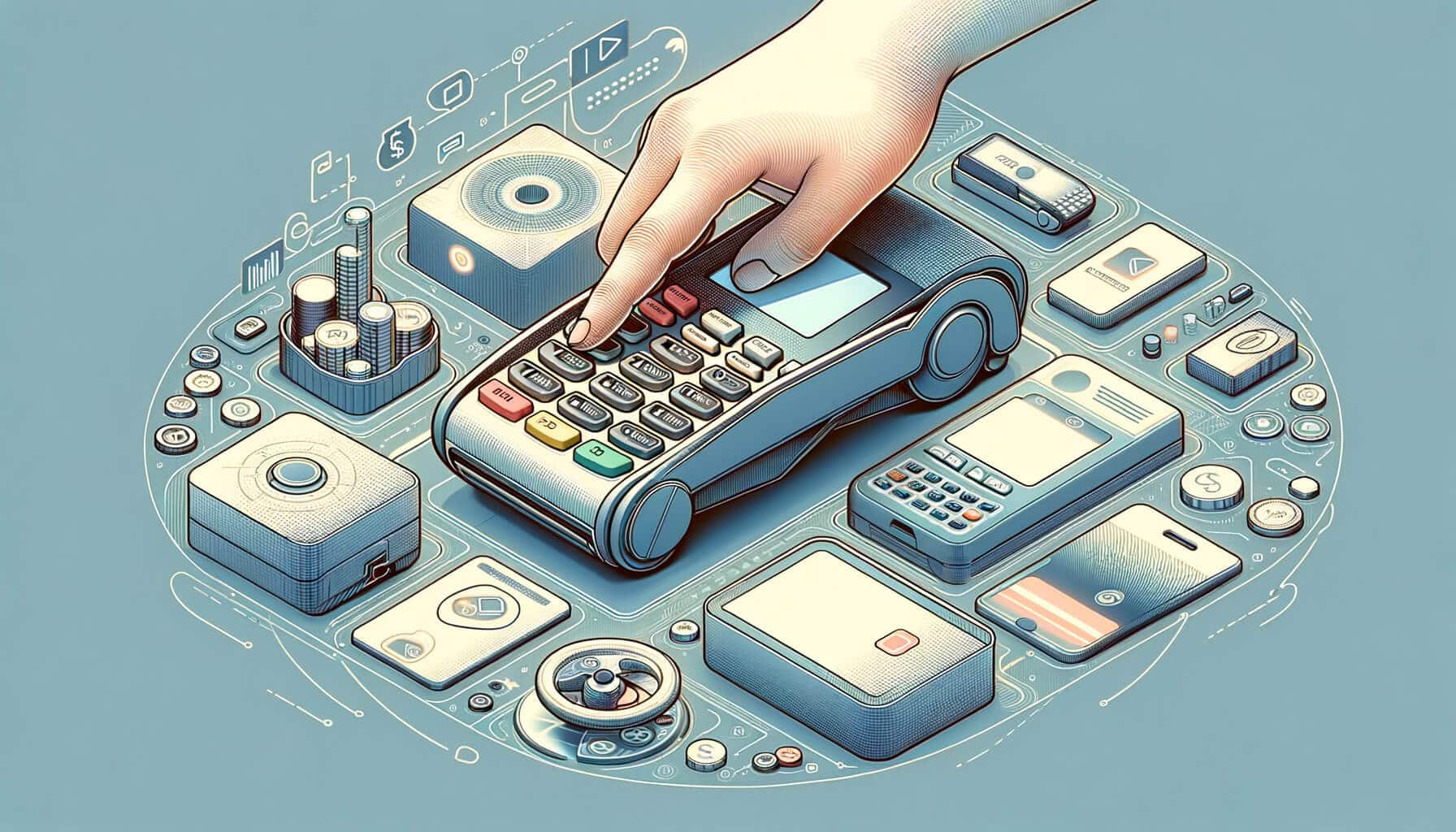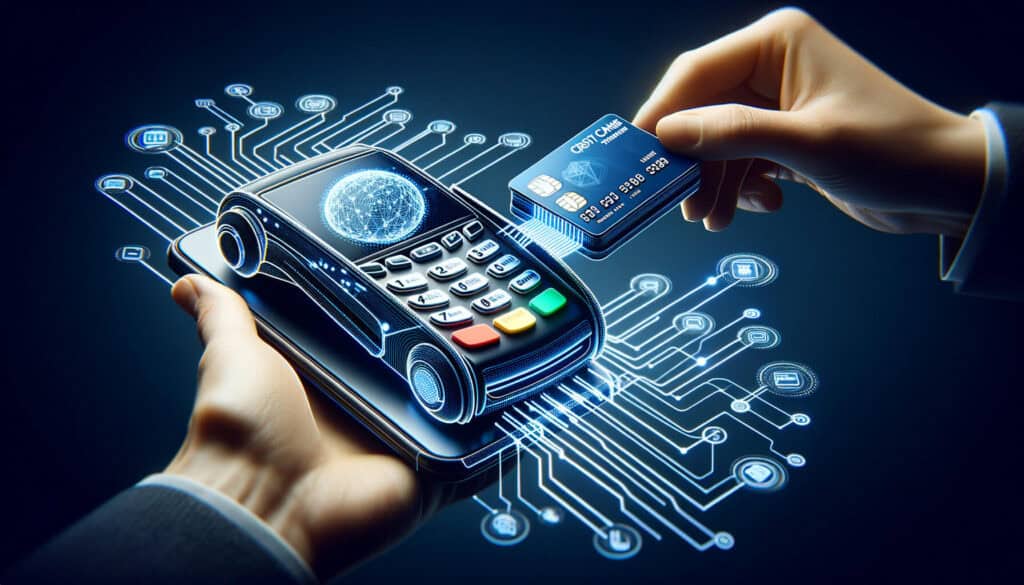
By Amanda Hoglund November 10, 2024
In today’s digital age, accepting credit card payments is essential for businesses of all sizes. A credit card terminal is a device that allows merchants to process credit and debit card transactions securely. It plays a crucial role in facilitating smooth and efficient payment processing, ensuring customer satisfaction, and boosting sales.
In this comprehensive guide, we will walk you through the process of setting up a credit card terminal, from choosing the right device to configuring it for your business needs.
Choosing the Right Credit Card Terminal for Your Business

Before diving into the setup process, it is important to select the right credit card terminal for your business. There are various types of terminals available in the market, including traditional countertop terminals, wireless terminals, and mobile card readers. Consider your business type, size, and specific requirements when making this decision.
- Determine your business needs: Assess your business requirements, such as the volume of transactions, mobility, and connectivity options. This will help you narrow down your choices and select a terminal that aligns with your needs.
- Research available options: Conduct thorough research on different credit card terminal models and brands. Look for features like EMV chip card compatibility, contactless payment acceptance, and compatibility with your point of sale (POS) system.
- Compare pricing and fees: Consider the upfront cost of the terminal, as well as any ongoing fees associated with its use. Compare pricing and fees from different providers to ensure you are getting the best value for your investment.
- Check for compatibility: Ensure that the credit card terminal you choose is compatible with your existing POS system or software. This will streamline the integration process and prevent any compatibility issues down the line.
- Read customer reviews: Look for customer reviews and testimonials to gain insights into the reliability, performance, and customer support of different credit card terminal providers. This will help you make an informed decision based on real-world experiences.
Setting Up the Hardware: Step-by-Step Guide

Once you have selected the right credit card terminal for your business, it’s time to set up the hardware. Follow these step-by-step instructions to ensure a smooth installation process:
- Unbox the terminal: Carefully unbox the credit card terminal and remove all packaging materials. Ensure that all the necessary components, such as the terminal, power cord, and connectivity cables, are present.
- Connect the power source: Plug in the power cord into the terminal and connect it to a power outlet. Make sure the terminal is receiving power before proceeding to the next step.
- Connect to the internet: Depending on the type of terminal, you may need to connect it to the internet via Ethernet, Wi-Fi, or cellular data. Follow the manufacturer’s instructions to establish a stable and secure internet connection.
- Insert paper roll (if applicable): If your credit card terminal uses thermal paper for printing receipts, open the paper compartment and insert a paper roll. Make sure the paper is properly aligned and feeds smoothly.
- Perform initial setup: Turn on the terminal and follow the on-screen prompts to complete the initial setup process. This may involve selecting language preferences, setting the date and time, and configuring basic settings.
- Test the terminal: Once the initial setup is complete, perform a test transaction to ensure that the terminal is functioning correctly. Use a test card or a real card with a small transaction amount to verify that the terminal can process payments accurately.
Connecting the Credit Card Terminal to Your Point of Sale System

To streamline your payment processing workflow, it is crucial to connect your credit card terminal to your point of sale (POS) system. This integration allows for seamless communication between the terminal and your POS software, enabling efficient transaction processing and accurate record-keeping. Follow these steps to connect your terminal to your POS system:
- Determine the integration method: Depending on your POS system and credit card terminal, there are different integration methods available, such as USB, Bluetooth, or API integration. Consult the user manuals or contact the respective manufacturers for specific instructions.
- Install necessary drivers or software: If your integration method requires the installation of drivers or software, ensure that you have the latest versions downloaded and installed on your POS system. This will enable proper communication between the terminal and the software.
- Connect the terminal to the POS system: Connect the credit card terminal to your POS system using the appropriate cables or wireless connection method. Follow the manufacturer’s instructions to establish a secure and reliable connection.
- Test the integration: Once the connection is established, perform a test transaction to ensure that the terminal and POS system are communicating effectively. Verify that the transaction details are accurately recorded in your POS software.
Configuring the Credit Card Terminal: Software Setup
After setting up the hardware and connecting it to your POS system, it is essential to configure the credit card terminal’s software settings. This step ensures that the terminal is optimized for your business needs and complies with industry standards. Follow these guidelines to configure the software settings:
- Access the terminal’s settings menu: Most credit card terminals have a settings menu accessible through the device’s keypad or touchscreen. Consult the user manual or contact the manufacturer for specific instructions on accessing the settings menu.
- Set the payment processing options: Configure the payment processing options according to your business requirements. This includes selecting the types of payment methods accepted (credit, debit, contactless), setting transaction limits, and enabling tip functionality if applicable.
- Configure receipt settings: Customize the receipt settings to include your business name, logo, and contact information. You may also choose to enable or disable receipt printing, depending on your customers’ preferences.
- Enable security features: Activate the terminal’s security features, such as encryption and tokenization, to protect customer data and prevent fraud. Consult the user manual or contact the manufacturer for guidance on enabling these features.
- Update software and firmware: Regularly check for software and firmware updates provided by the terminal manufacturer. These updates often include bug fixes, security patches, and new features that enhance the terminal’s performance and security.
Testing and Troubleshooting: Ensuring Proper Functionality
Before fully integrating the credit card terminal into your business operations, it is crucial to thoroughly test its functionality and troubleshoot any potential issues. This step ensures that the terminal is working correctly and provides a seamless payment experience for your customers. Follow these steps to test and troubleshoot the terminal:
- Perform test transactions: Conduct multiple test transactions using different payment methods, such as credit cards, debit cards, and contactless payments. Verify that the terminal accurately processes the transactions, prints receipts (if applicable), and records the transaction details in your POS system.
- Test connectivity: Ensure that the terminal maintains a stable internet connection throughout the testing process. Test the terminal’s connectivity in different areas of your business premises to identify any dead spots or weak signal areas.
- Troubleshoot common issues: Familiarize yourself with common credit card terminal issues and their troubleshooting steps. This includes issues like card reading errors, printer malfunctions, and connectivity problems. Consult the user manual or contact the manufacturer’s customer support for guidance on resolving these issues.
- Train your staff: Provide comprehensive training to your staff on how to operate the credit card terminal effectively. Educate them on common troubleshooting techniques and best practices for handling different payment scenarios. This will ensure that your staff can assist customers and resolve any payment-related issues efficiently.
Security Measures: Protecting Customer Data and Preventing Fraud
As a business owner, it is your responsibility to protect your customers’ sensitive payment information and prevent fraudulent activities. Implementing robust security measures is crucial to maintaining customer trust and complying with industry regulations. Here are some essential security measures to consider:
- PCI DSS compliance: Ensure that your credit card terminal and payment processing system comply with the Payment Card Industry Data Security Standard (PCI DSS). This set of security standards helps protect cardholder data and prevent data breaches.
- Encryption and tokenization: Enable encryption and tokenization features on your credit card terminal. Encryption ensures that sensitive data is securely transmitted, while tokenization replaces cardholder data with unique tokens, reducing the risk of data theft.
- EMV chip card acceptance: EMV chip cards provide an added layer of security compared to traditional magnetic stripe cards. Ensure that your credit card terminal is EMV chip card compatible to protect against counterfeit card fraud.
- Regular software updates: Keep your credit card terminal’s software and firmware up to date to benefit from the latest security patches and bug fixes. Regular updates help protect against emerging threats and vulnerabilities.
- Employee training: Educate your employees on best practices for handling customer payment information securely. Train them to identify and report any suspicious activities or potential security breaches.
Understanding Payment Processing: How Transactions are Authorized
To fully grasp the credit card terminal setup process, it is essential to understand how payment processing works and how transactions are authorized. Here is a simplified overview of the payment processing flow:
- Cardholder initiates payment: The customer presents their credit or debit card to the merchant for payment.
- Card information is captured: The credit card terminal reads the card’s magnetic stripe or EMV chip, capturing the necessary card information.
- Transaction data is transmitted: The terminal securely transmits the transaction data to the payment processor or acquiring bank.
- Authorization request: The payment processor sends an authorization request to the cardholder’s issuing bank, requesting approval for the transaction.
- Issuing bank approves or declines: The issuing bank reviews the authorization request and approves or declines the transaction based on factors like available funds, card validity, and fraud detection algorithms.
- Authorization response: The issuing bank sends an authorization response back to the payment processor, indicating whether the transaction is approved or declined.
- Transaction completion: Based on the authorization response, the payment processor communicates the result to the credit card terminal. If approved, the terminal prints a receipt, and the transaction is completed. If declined, the terminal prompts the customer to use an alternative payment method.
Frequently Asked Questions (FAQs)
Q1. Can I use any credit card terminal with my existing POS system?
Not all credit card terminals are compatible with every POS system. It is crucial to ensure that the terminal you choose is compatible with your POS system or software. Consult the terminal and POS system manufacturers for compatibility information.
Q2. How long does it take to set up a credit card terminal?
The setup time for a credit card terminal can vary depending on factors like the complexity of the terminal, the integration method with your POS system, and your familiarity with the setup process. On average, it can take anywhere from 30 minutes to a few hours to complete the setup.
Q3. What should I do if my credit card terminal encounters an error during a transaction?
If your credit card terminal encounters an error during a transaction, follow these steps: 1) Restart the terminal and attempt the transaction again. 2) Check for any error messages or codes displayed on the terminal and consult the user manual or contact customer support for troubleshooting guidance. 3) If the issue persists, contact your payment processor or terminal manufacturer for further assistance.
Q4. How often should I update my credit card terminal’s software and firmware?
It is recommended to regularly check for software and firmware updates provided by the terminal manufacturer. Aim to update your credit card terminal at least once every few months or whenever new updates are released. Regular updates help ensure optimal performance, security, and compatibility with the latest payment technologies.
Conclusion
Setting up a credit card terminal is a crucial step for businesses looking to accept credit and debit card payments. By following the steps outlined in this comprehensive guide, you can ensure a smooth and efficient setup process. From choosing the right terminal to configuring its software settings and implementing security measures, each step plays a vital role in providing a seamless payment experience for your customers.
Remember to regularly update your terminal’s software, train your staff, and stay informed about the latest payment processing trends and security practices. With a properly set up credit card terminal, you can enhance your business operations, boost customer satisfaction, and drive sales growth.